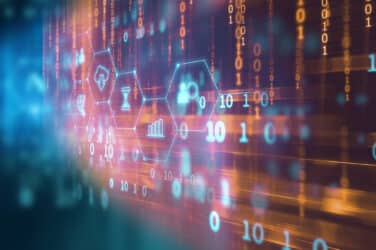The peer-to-peer economy has exploded over the last decade. Retail lending and crowdfunding have been revolutionized by this model, but there are huge opportunities for other areas of the financial industry to adopt peer-to-peer systems, in particular in the capital markets.
Individuals and hedge funds alike continue to rely on trusted third parties to act as custodians for their assets. Blockchain technology enables end users to have direct ownership and control of their assets, whether bitcoins or bonds. Using this technology, assets are not controlled by a central third party. There is no need for messaging layers, settlement steps, or reconciliation. When ownership is simple, transacting is a one step process with limited need for intermediaries.
Blockchains benefit the parties who hold assets. In the capital markets, these parties are invariably asset managers, who hold assets on behalf of their investors. On the sellside, blockchain technology can offer major improvements over existing systems. It can cut incremental back office costs, speed up settlement, and make risk transparent in real-time to managers and regulators. This area is being explored by technology teams at every major bank, as it should be. However, due to a combination of risk aversion and misunderstandings on the current limitations of the technology, buyside players have left opportunities to deploy or participate in blockchain networks largely untouched.
Yet many of the challenges that the buyside faces can be solved with distributed ledgers. Regulatory shifts such as Basel III and the Dodd-Frank Act have created major pain points for banks, limiting their risk exposure and imposing stricter rules around market making. The growing buyside community, meanwhile, has not adjusted to this reduced liquidity environment. This has resulted in dislocated markets: trade volumes across asset classes are on the decline, while portfolio managers and traders complain of poor execution and the difficulty of price discovery.
In the face of these problems, banks and buyside institutions alike are increasingly turning to electronic trading platforms. Price streaming of over-the-counter products has become obligatory for trading desks. Much of the volume traded on Wall Street takes place on matching systems on which traders show their interest to buy or sell securities at a market midpoint and, if matched, pay a nominal commission to the inter-dealer broker.
Asset managers and others have attempted to create comparable matching platforms. Additionally, smaller disruptive players such as TruMid have launched all-to-all platforms that include both buy- and sellside participants, aiming for increased liquidity and lower trading costs.
The trend toward counterparties trading directly with each other is precisely the sort of function that blockchain enables.
Financial intermediaries allow asset managers to maintain anonymity, preserving the confidentiality of transactions and trading strategies. Breakthroughs in blockchain technology are beginning to provide for this by protecting the privacy of all parties involved such that neither the counterparty nor the financial community at large will know who has undertaken the trade.
Financial intermediaries provide guarantees among counterparties by keeping tabs on margin and capital requirements and reconciling trades and accounts. Blockchain technology creates a single version of the truth. Blockchains can support smart systems that only allow a fund to transact if it meets the financial requirements needed to execute the trade.
A financial system in which asset managers trade directly with each other can be built on blockchain technology. Blockchains create an environment where trust, anonymity, security, confidentiality, speed, and regulatory transparency are inherent.
The greatest barrier to the creation of such a financial system is the network effect at play in the deployment of blockchain technology. In order for a blockchain to be useful, multiple legal entities should be engaged on the network.
There are two paths that have developed in the effort to reach this goal. The first is top-down: to engage all relevant market players in designing protocols and governance structures. Naturally, however, this means trying to align interests among those who are direct competitors. The second is bottom-up: to build technology that is fit-for-purpose for a given use case, even if the benefits gained from it are initially limited. This latter path allows the technology to be prototyped, piloted, and put into production without market-wide consensus as a prerequisite. Players can be quick to ship, trial, and improve blockchain architecture. From there, the technology can be expanded and the network can be reasonably expected to grow.
Banks are deeply engaged in this conversation, exploring both paths toward the future of financial infrastructure. Asset managers, mutual funds, and hedge funds should join the discussion in order to have a role in shaping this future.





